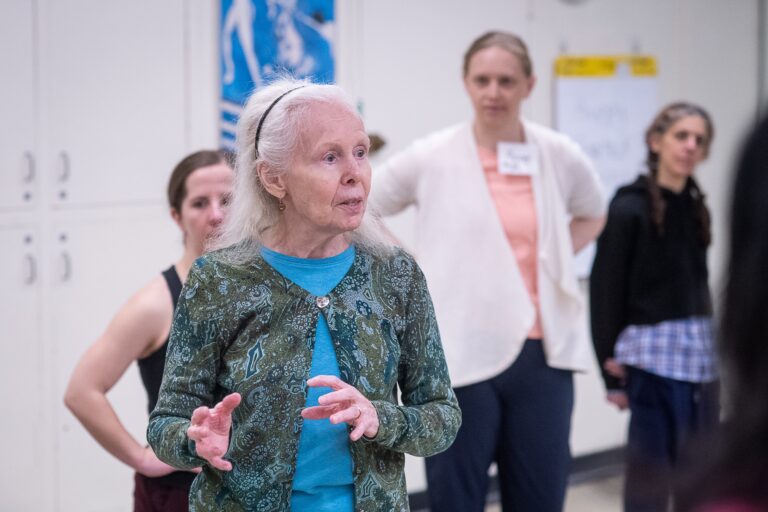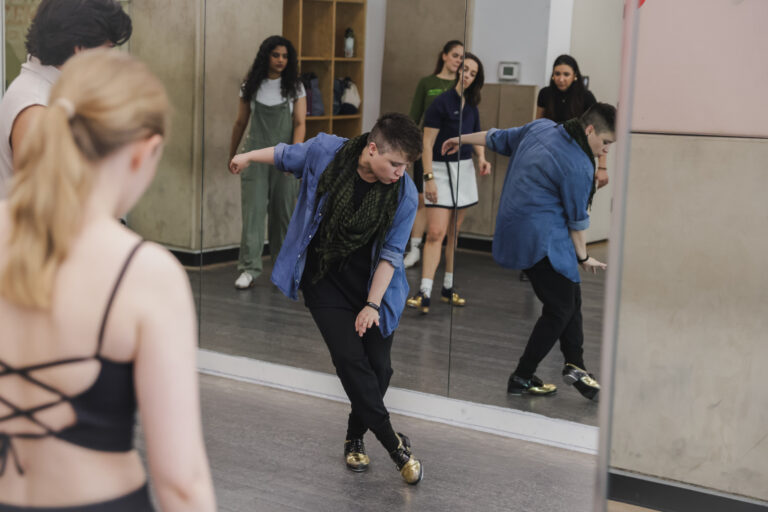
A year ago, Orlando Ballet School offered a weekend workshop called “Come Dance With Us.” The pilot program was designed for children with physical special needs and disabilities, such as cerebral palsy, hydrocephalus, brittle bone disease and a variety of conditions that require children to wear braces or use walkers and wheelchairs.
The workshop was such a positive experience that the school expanded it to 10 weeks. Recently, I was given the opportunity to teach within the program. To my surprise, the students were capable of participating in ways I wouldn’t have expected.
In a short time, I’ve been so impressed with the children’s ability to modify movement, not to mention the joy and incredible spirit the students bring to class each week. It has been an extremely valuable experience for me as a teacher, and I have learned a great deal working with these inspiring kids.
More Than Just a Dance Class
The goal of a program for children with mobility differences is to give the students an opportunity to experience dance, but also to provide therapeutic benefits. My school partnered with a hospital rehabilitation program in the area. In each class, a pediatric physical therapist is present to provide assistance and help with modifications the children might need.
“The program allows participants to focus on their abilities rather than their disabilities, which facilitates improved confidence and self-esteem,” says Angela Krahn, PT/DPT at Orlando Health Arnold Palmer Hospital for Children. “When the students walk into class, you can feel their sense of belonging,” she adds.
For a teacher, it is immensely reassuring to have a PT present. While I have a long background in teaching children to dance, I know that I am not an expert in pediatric disabilities. Incorporating a nurse or therapist into class, who can provide guidance and feedback, has been invaluable—for me and the students. “Working with a ballet teacher facilitates creative movement, stretching and strengthening,” says Krahn. “A recreational ballet class is a great addition to physical therapy.”
In a short period of time, I have watched the young students gain confidence and skill. They show enthusiasm and put incredible effort into their work. Dance has given them the opportunity to feel special and beautiful.
Developing Improvisational Teaching Skills
As a teacher, it is necessary to come up with ways to meet the needs of your students. In any scenario, if an explanation or demonstration isn’t working or getting through to the students, you need to be able to come up with new ways to help your class. I enjoy getting to brainstorm the different ways I can help the children complete an exercise, which makes me a better teacher. I am reminded that instructors can get stuck in comfortable patterns and habits when teaching. Working with kids with physical differences is an opportunity to revisit the way I teach and make improvements. In all instances, finding ways to meet students’ needs is what teaching is all about.
I try to make modifications for each individual so that he/she can participate fully in every exercise, even if each student performs the movement differently. For example, we have some students jump along dots on the floor in a hopscotch pattern, while others work on slowly stepping their feet open and closed along the dots while using a walker. With a little bit of imagination, any exercise can be modified to meet the needs of the students in the room and still be fun.
Watching the Older Students Mentor
Another unexpected bonus of the class has been watching my older students mentor the young students with special needs. We pair each child with an upper-level ballet student from the school—these are advanced dancers who are on the verge of professional careers. I knew that my upper-level students would do an excellent job working with the young students, but having the chance to observe them as more than just dancers, and seeing them care so much for others, has been so affirming. I hope it gives them perspective and helps them realize how lucky they are to dance so freely. The program has been a bonding experience for everyone involved. We all come out of it a little better for the experience.
I hope that in the future more ballet schools offer programs for children with differences and special needs. Creating an environment where this can occur is a benefit to the community and to the world of dance. Everyone deserves a chance to dance and an opportunity to express themselves through movement.



